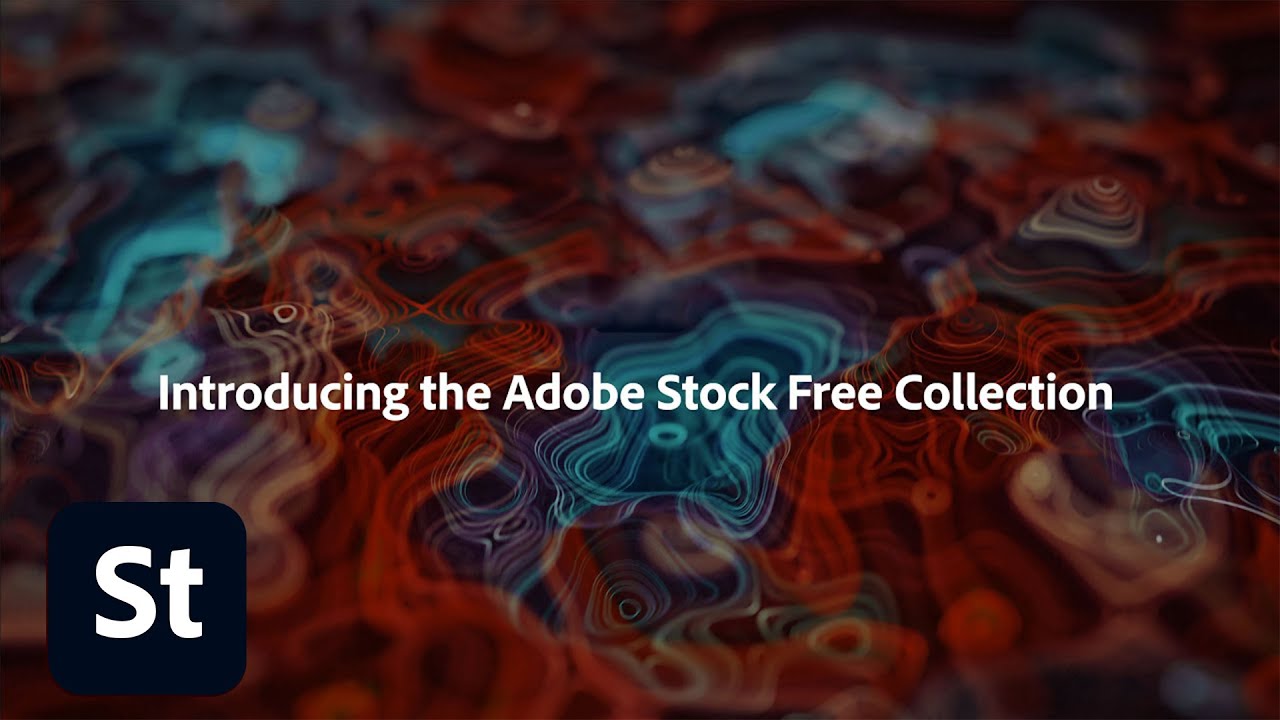Adobe Stock offers a vast library of high-quality images, videos, templates, and other assets for creative projects. Understanding its licensing models is crucial for users to choose the right option that fits their needs. This guide will provide an overview of Adobe Stock and an in-depth look at its various licensing models.
What is Adobe Stock

Adobe Stock is a service that provides access to millions of curated assets for creative professionals. Users can purchase stock images, graphics, videos, and templates to enhance their projects. Integrated with Adobe Creative Cloud applications, Adobe Stock streamlines the creative workflow by allowing users to search for and license assets directly within their design programs. The library encompasses a wide variety of styles and categories, from photography to vector art.
Overview of Licensing Models

Adobe Stock offers two primary licensing models: Standard and Extended. Understanding these models is essential for selecting the right type of license for your project needs.
- Standard License: This model allows users to use assets in various projects, including creative and commercial use. It typically covers print and digital media, including websites, social media, and advertisements. However, there are limitations on the number of copies and resale of the assets.
- Extended License: This option provides broader usage rights. Users can utilize the assets in products for resale, unlimited copies, or merchandise. This model is ideal for businesses seeking to incorporate stock assets into their products or commercial services.
Additionally, Adobe Stock provides subscription plans for regular users, allowing them to purchase a set number of assets per month. This can be a cost-effective solution for frequent projects. By understanding these licensing options, users can make informed decisions when sourcing and using stock assets from Adobe Stock.
Standard License Explained
When diving into the world of Adobe Stock, it’s crucial to understand the different licensing models that govern how you can use the assets you purchase. The Standard License is the most common option and offers a wide range of uses suitable for many projects.
With a Standard License, you can use Adobe Stock‘s images, videos, and templates in a variety of creative works, including:
- Websites and blogs
- Social media content
- Print materials like flyers and brochures
- Presentations and marketing campaigns
Here are some key points to keep in mind about the Standard License:
- Usage Limitations: You can use the asset in various medium types but with some restrictions. The Standard License allows for up to 500,000 copies distribution, which is often sufficient for most small to medium-sized businesses.
- No Resale: You cannot resell the image as is, or as part of a template for other users, which means it needs to be incorporated into your own design or project.
- Editorial Use: The Standard License also includes the option to use images for editorial purposes, allowing for news stories, blogs, or non-promotional content.
Overall, the Standard License is an excellent choice for most users, providing a good balance of flexibility and restrictions. As long as you adhere to the guidelines, you can create stunning pieces of content with the peace of mind that your assets are licensed appropriately.
Extended License Explained
Now, if you’re looking for more freedom and a broader range of applications for your Adobe Stock assets, the Extended License is your go-to option. This license takes things a step further, making it an ideal choice for larger projects or commercial uses.
With an Extended License, you gain several advantages, including:
- Unlimited distribution: You can produce and share unlimited copies of your content across various platforms, which is perfect for large-scale advertising campaigns.
- Resale options: You are allowed to sell products that incorporate the licensed asset, such as merchandise, printed material, and more. This means greater creative freedom!
- Increased usage rights: The Extended License permits usage in more types of projects, including apps, templates, and merchandise, significantly expanding your opportunities.
It’s worth noting that while the Extended License offers fantastic flexibility, it does come with a higher price tag. Here are a few situations where you might opt for an Extended License:
| Scenario | Standard License? | Extended License? |
|---|---|---|
| Launching a product with branded packaging | No | Yes |
| Creating a limited-run poster | Yes | Yes |
| Using images in a template for resale | No | Yes |
In summary, the Extended License is perfect for those anticipating extensive usage or wishing to monetize their projects. It provides peace of mind and allows for creativity without borders!
When to Choose a Standard License
Choosing the right licensing model for your Adobe Stock assets is crucial to ensure that your project remains compliant while also meeting your creative needs. Standard licenses are designed for a wide array of common uses, making them a popular choice. So, when should you opt for a standard license?
Here are some scenarios where a standard license might be the best fit:
- Digital and Print Media: If you’re creating marketing materials, social media posts, or online articles that will be distributed online or in print, a standard license typically covers these uses.
- Websites and Blogs: For images that will enhance your website or blog content, a standard license provides ample coverage without the need for additional permissions.
- Corporate Presentations: When crafting presentations for internal use or external client meetings, standard licenses allow you to use images freely without extensive restrictions.
- Small-Scale Projects: For projects with limited reach—such as local advertisements or small-scale publications—a standard license is often sufficient.
In essence, if your usage aligns with informal marketing efforts or standard media presentations, then a standard license is your go-to option. Just remember that, with a standard license, there are limits on how images can be resold or used in merchandise, so reading the terms is always wise!
When to Choose an Extended License
Sometimes, your creative vision requires a little more freedom in image usage. This is where the extended license comes into play. It offers additional rights that can be essential for certain projects. Here’s when you might want to consider opting for an extended license:
1. Resale Purposes: If you’re planning to create products that will be sold—like t-shirts, posters, or other merchandise—an extended license is often required.
2. Large Scale Campaigns: For extensive advertising campaigns, especially those that will be broadcast in a wide geographical area (think national or international exposure), an extended license provides broader rights. 3. Web and Mobile Apps: If you’re incorporating images into a mobile app or an online service that users will interact with, it’s a good idea to choose an extended license to ensure that you’re fully covered. 4. Unique or High-Value Projects: If your project has the potential to generate significant revenue or visibility, investing in an extended license can mitigate legal risks down the line.
In summary, an extended license is the smarter choice when your project requires more freedom to use and distribute Adobe Stock images. Always assess your project’s goals and the potential scale of use to determine the best licensing option for your needs.
Benefits of Using Adobe Stock
Adobe Stock offers a myriad of advantages for creatives and businesses alike. If you’re on the fence about whether to dive in, here are some compelling reasons to consider:
- High-Quality Assets: Adobe Stock boasts millions of high-resolution images, videos, and templates. With so many top-notch assets, you’ll find exactly what you need to elevate your projects.
- Seamless Integration: If you’re already using Adobe Creative Cloud applications like Photoshop, Illustrator, or InDesign, Adobe Stock integrates smoothly with these tools. You can browse, license, and use assets without leaving your favorite programs.
- Flexible Licensing: Adobe Stock offers various licensing options to cater to different needs, whether you’re using assets for personal projects or large-scale commercial endeavors.
- Customizable Collections: Create collections of your favorite assets for easy access. This is particularly useful when you’re juggling multiple projects.
- Regular Updates: Adobe Stock continually refreshes its library with new content. You can stay on-trend with fresh visuals that cater to current design aesthetics.
Overall, the benefits of using Adobe Stock extend beyond just having access to images—it’s about streamlining your workflow, enhancing your creative possibilities, and ensuring that you always have quality visuals at your fingertips.
Common Questions About Adobe Stock Licenses
If you’re new to Adobe Stock, you probably have some questions regarding how its licensing works. Here are a few common questions and their answers to help you navigate the ins and outs of licensing:
| Question | Answer |
|---|---|
| What is the difference between standard and extended licenses? | Standard licenses are suited for most uses, including marketing and web projects, while extended licenses allow for more extensive use, such as merchandise or products for resale. |
| Can I use Adobe Stock assets for commercial purposes? | Absolutely! With the standard license, you can use assets for commercial projects, but be sure to check the license agreement for specifics on your intended use. |
| Do I need to credit the creator of an asset? | Generally, credit isn’t required, but it’s always a good practice to credit creators when possible, as it supports their work. |
| Are there any restrictions on using Adobe Stock assets? | Yes, you cannot use assets in logos, trademarks, or for any unlawful purposes. Always refer to Adobe’s licensing agreement for detailed restrictions. |
Understanding these key aspects of Adobe Stock’s licensing can help ensure you’re using visual content correctly and efficiently, keeping your projects compliant and creative!
Understanding Adobe Stock’s Licensing Models
Adobe Stock has become a significant player in the stock photo industry, offering a wide array of high-quality images, videos, and templates. To effectively utilize Adobe Stock, it’s crucial to understand its licensing models, enabling users to choose the right type for their projects. This understanding will also allow for more seamless integration with Adobe Creative Cloud applications.
Adobe Stock primarily offers two licensing models: Standard Licenses and Enhanced Licenses.
| License Type | Description | Usage Limitations | Pricing |
|---|---|---|---|
| Standard License | Allows for use in most projects, including websites, blogs, and social media. | Up to 500,000 copies of printed materials; not permitted for items intended for resale. | Typically lower cost compared to Enhanced Licenses. |
| Enhanced License | Provides broader rights, including larger print runs and use in merchandise. | No maximum limit on copies; permit resale in merchandise. | Higher cost, reflecting the more extensive rights provided. |
Both licenses have their own set of features tailored for varying needs. Besides these, Adobe Stock also allows users to edit and modify images according to their requirements, given that the licensing has been properly adhered to. It’s vital for creators and businesses to choose the appropriate licensing model to avoid legal issues and ensure that their projects remain compliant.
In conclusion, understanding Adobe Stock’s licensing models not only helps in making informed decisions but also enhances creativity and productivity in digital projects.


